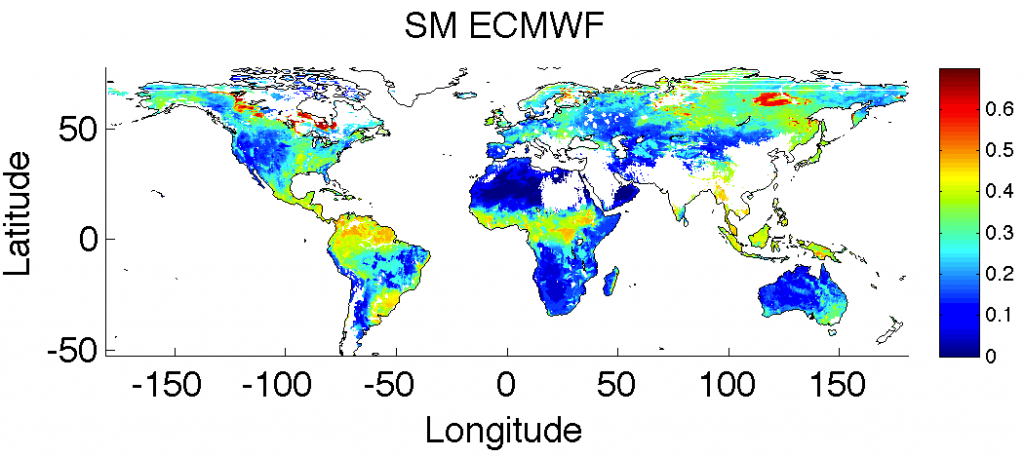NEW: The Summary Report of the project can be downloaded hereCESBIO is behind the operational L2 algorithm used to retrieve soil moisture from SMOS brightness temperatures. This algorithm uses a physical model to link soil moisture and brightness temperature. Other approaches are also possible as, for instance, using independent estimations of the soil moisture and determining statistically the relation linking the soil moisture to the brightness temperatures measured by SMOS. Subsequently, this relation can be used to derive soil moisture from SMOS measurements. Very efficient techniques to perform a statistical inversion of remote sensing data are based in Neural Networks.The European Spatial Agency (ESA) has funded a project to study the feasibility of soil moisture retrieval from SMOS measurements using neural networks (the SMOS+NN project). The SMOS+NN team is composed by CESBIO scientists (N. Rodriguez, P. Richaume, Y. Kerr, F. Cabot) with collaborators from Observatoire de Paris (F. Aires, C. Prigent, C. Jimenez), and the ARRAY company (A. Mahmoodi).As reference soil moisture data sets, we have used of ECMWF numerical weather prediction models and SMOS soil moisture from L3 daily products of the CATDS. We ave trained a feed-forward neural network using SMOS measurements for incidence angles in the range from 25º to 60º as main input to the neural network. About one hundred of days from April 2011 to Mars 2012 were used for the training. Afterwards, the statistical relation determined by the neural network was used to derive soil moisture for 2010 observations.The results are very interesting as the neural network reproduces the global soil moisture distribution showing that neural networks work well for full range of ecosystems and physical conditions. The following figure shows an average of the soil moisture retrieved by a neural network (trained with ECMWF SM) for July 2010.
To be compared to the average soil moisture in July 2010 estimated from the ECMWF models:
Temporal series of SMOS+NN soil moisture retrievals are also in good agreement with other estimations as those of the SMOS operational algorithm and with in situ measurements. The following figures show the temporal evolution of soil moisture in the 0-5 cm range for the Little Washita watershed (Jackson et al. 2010) and the Abrams site of the SCAN network (US Department of Agriculture). The magenta line are the in situ measurements. Back squares are the SMOS L3 soil moisture measurements. Blue squares are the ECMWF model predictions for the 0-7 cm layer, and red dots are the SM retrieval from SMOS data using a neural network trained with SMOS CATDS L3 data.
So, why bothering with a another method to retrieve soil moisture ? Because SMOS+NN retrieval is very efficient: 15 minutes are enough to train the neural network. Once the neural network has been trained, soil moisture can be retrieved from a whole year of SMOS observations in less than 1 minute…The project has been presented by Nemesio Rodriguez in the ESA’s workshops:
- SMOS Land Applications Workshop, (Frascati, Italy, 25 – 27 February 2013) the slides can be downloaded here)
- Satellite soil moisture validation and application workshop (Frascati, Italy, 1-3 July 2013) . The slides can be downloaded here
Other SMOS+NN documents can be found here (password needed)


